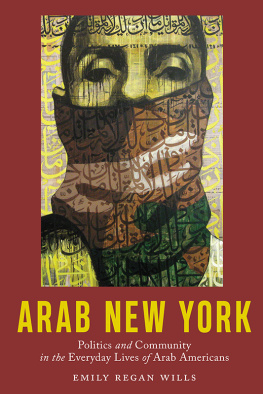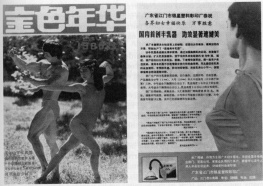WOMENS VOICES IN TUDOR WILLS, 14851603
For Mother
All time, all time
Womens Voices in Tudor Wills, 14851603
Authority, Influence and Material Culture
SUSAN E. JAMES
First published 2015 by Ashgate Publishing
Published 2016 by Routledge
2 Park Square, Milton Park, Abingdon, Oxon OX14 4RN
711 Third Avenue, New York, NY 10017, USA
Routledge is an imprint of the Taylor & Francis Group, an informa business
Copyright Susan E. James 2015
Susan E. James has asserted her right under the Copyright, Designs and Patents Act, 1988, to be identified as the author of this work.
All rights reserved. No part of this book may be reprinted or reproduced or utilised in any form or by any electronic, mechanical, or other means, now known or hereafter invented, including photocopying and recording, or in any information storage or retrieval system, without permission in writing from the publishers.
Notice:
Product or corporate names may be trademarks or registered trademarks, and are used only for identification and explanation without intent to infringe.
British Library Cataloguing in Publication Data
A catalogue record for this book is available from the British Library
The Library of Congress has cataloged the printed edition as follows:
James, Susan E., 1945
Womens voices in Tudor wills, 14851603 : authority, influence and material culture / by Susan E. James.
pages cm
Includes bibliographical references and index.
ISBN 978-1-4724-5382-2 (hardcover : alk. paper)ISBN 978-1-3155-4648-3 (ebook)ISBN 978-1-1347-8101-0 (epub)
1. WomenGreat BritainSocial conditions16th century. 2. LegaciesGreat BritainHistory16th century. 3. WillsGreat BritainHistory16th century. 4. Great BritainSocial conditions16th century. 5. Great BritainHistory1485 I. Title.
HQ1149.G7J36 2015
305.4094109031dc23
2014042885
ISBN: 9781472453822 (hbk)
ISBN: 9781315546483 (ebk-PDF)
ISBN: 9781134781010 (ebk-ePUB)
Contents
List of Illustrations
Acknowledgements
My special thanks go to the Huntington Library and Art Gallery in San Marino, California, and to its research librarians. Without that resource this book could not have been written. My thanks also go to the La Canada Public Library and its librarians who have helped with ancillary volumes and cheerful encouragement. To Arlene Withers, who offered advice on sixteenth-century legal questions, my thanks. And to Erika Gaffney of Ashgate Press, whose faith in my work is profoundly appreciated. As always my gratitude goes out to my family who has unfailingly supported my research and to whom the word Tudor is still not anathema. And to Royal, who has always understood and encouraged the contributions of women to society. While researching and writing this book, there were moments when a mental time out was required. To paraphrase a star ship captain, The more demanding the work, the greater the need for play. To Hart Hanson and the creators of Bones, who not only produced role models of powerful, articulate women but whose own work provided a time for play when it was sorely needed, I am in your debt. You added color to a journey that was often circumscribed by endless pages of black and white and offered scientific insights that inspired me to dig deeper. As for the rest, omnia probate.
A Note on Names and Quotations
The choice of first names for English men and women in the sixteenth century was a fairly limited one. Thus it may become difficult at times for the reader to distinguish among the multitude of Joans, Agness, Margarets, and Elizabeths whose wills are examined here. In light of this and as a gesture to the integrity of each individual woman, I have used the spelling of their names as they, themselves, recorded them. While in modern records Jehane, Johann, and Johane are all usually reduced to Joan, by keeping the original spelling, the reader will, I hope, find it easier to differentiate between them. As for the spelling in quotations taken from wills, where the original holographic will has been used, the original spelling has also been used. Where a published version of the will with modernized spelling has been quoted, the text follows that spelling.
Introduction
Among the largest and most diverse sources of surviving contemporary documentation available to Tudor historians are the collections of wills and inventories probated by a hierarchy of ecclesiastical courts between 1485 and 1603. During the sixteenth century thousands of wills were written and filed for citizens from all levels of society. The Prerogative Court of Canterbury alone has over 52,000 probates docketed. Because the overwhelming majority of these belong to men, in the traditional study of Tudor history, the compilation, quantification, and analysis of final testaments has leaned heavily on the male point of view even when it is their wives, mothers, sisters, and daughters who are being discussed. Where womens wills have been studied, it is generally those belonging to the aristocracy whose voices have been magnified the most. Yet women who practiced as serving maids, tradeswomen, inn owners, dairy farmers, and wool merchants all left wills behind. Each testamentary statement offers not only a glimpse into an individual life but a new voice commenting on the feminine condition in a rapidly changing society.
While engaging with secondary sources, the mass of material referenced here is drawn from primary documents where women speak out in their own voice. In an earlier volume, one dynamic of the female population was examined, women as creators and consumers of the graphic arts during the English Renaissance.whom they considered to have a claim on their notice and protection. Over and over again, women as a population group demonstrate through their wills a more active interest in an expanded definition of family, a more extensive investment in broad-ranging communal concerns, and a greater awareness of social interactions and obligations than has generally been assumed.
In a sense these testamentary documents provide a subjective summation of the will-makers life experience, her sense of identity, her priorities and aspirations, her concerns for her heirs. Each will-maker assumed authority over the disposition of her estate, large or small, and through the reward of bequests or the punishment of disinheritance sought to control the behavior of those who would inherit that estate after her. Denyse Maynard of Staplehurst in Kent was typical of many women when she left her goods to her son, with the warning that if he did not abide by the terms of her will then he shall have noon of her property. The twin tools of authority and influence were wielded by women to create a future determined by the will-makers own goals and desires.
Writing a will was a function of perceived identity and an articulation of that identity, including its rights, rules, and responsibilities. Barbara Harris has noted that elite women forcefully expressed their feelings about their relatives in their wills. Here, more freely than at any other point in their lives, they could record their vision of the family and indicate whether and in what ways it differed from the vision of their male kin. Such an observation is true yet not confined to the elite or the exceptional alone. It is applicable to a large number of womens wills at all levels of society. Womens needs and aspirations for themselves and for their families were comparable whether aristocrat or shopkeeper and women of all classes who faced similar challenges, even if at vastly different levels of status and income, adapted patterns of behavior that were also similar. Earlier scholarly literature has examined so-called exceptional women in depth. But the Great Woman theory in history is on the evidence as dated as the Great Man theory of the nineteenth century. It has been argued that exceptional women occurring in any given sample are not typical of the female population as a whole. Yet by broadening the sample, what appears to be singular behavior may instead be revealed as indicative of a larger pattern where actions taken by prominent women and the motives that compelled them were emulated by others less well known or in more modest circumstances.












